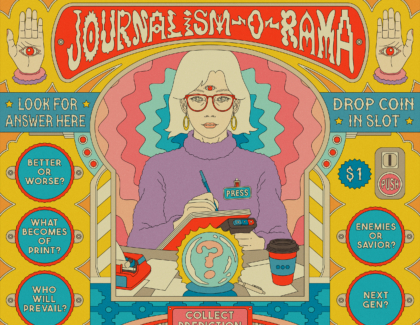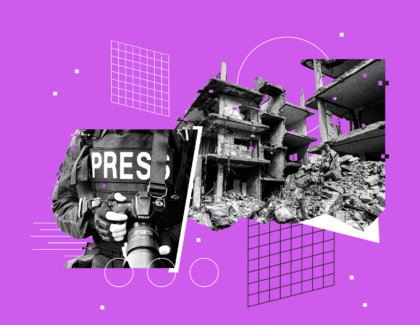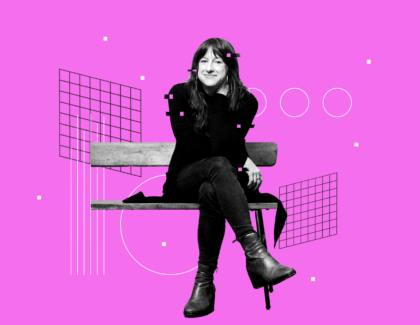Sign up for the daily CJR newsletter.
The organization Unity (née: “Unity: Journalists of Color,” and later, “Unity: Journalists for Diversity”) was born in 1990, and died in February 2018.
Formed to unite non-white journalism organizations, Unity finally threw in the towel after three decades of fighting the good fight. “We are not financially feasible anymore. We have no money coming in,” Unity’s president, Neal Justin, told Richard Prince’s Journal-isms column. But the end was about more than money. Unity’s demise could’ve been foreseen from its shaky beginning and throughout its contentious existence. And to think we had such high hopes planning its birth.
The idea for Unity originated during casual conversations between former National Association of Black Journalists President Will Sutton, Jr., and National Association of Hispanic Journalists founder Juan Gonzalez, who compared their experiences as journalists of color working in Philadelphia in the 1980s. The original idea was simple: Unite the four minority journalism organizations—the Asian American Journalists Association (AAJA), NABJ, NAHJ, and the Native American Journalists Association (NAJA)—in a collaborative effort to integrate every facet of our profession. In 1988, then-NABJ President DeWayne Wickham presided over the first meeting of the boards of the four organizations. Two years later, Unity was officially christened.
ICYMI: Funny moments in local news
I was a member of the organizing committee that met at San Francisco State on October 9, 1993. After years of discussions, the togetherness we long sought appeared within reach. We came up with several ideas: one was to begin a “news watch” magazine that issued zingers to media for specific racist acts.
“It was risky. It was new. It was bold,” says Jon Funabiki, a professor of journalism at San Francisco State University, via email. “I can remember journalists of all stripes being excited about working together and standing together….By standing shoulder-to-shoulder in this very visible public collaboration, Unity really projected a voice and a vision.”
Many supporters credit the coalition with taking a leading role in diversity efforts at a time when interest was waning. They also credit Unity for forging stronger individual relationships among the four groups and sponsoring student mentor programs. “I used to describe Unity leaders as ‘the foot soldiers of diversity,’ and I would joke to friends how extraordinary it was that journalists were working together in multi-racial collaboration,” Funabiki says.
But even in the early days, the warning signs were there. At the 1993 meeting in San Francisco, the representatives of the four groups were asked to list the specific concerns and aspirations of their organizations. Members of AAJA, NABJ, and NAHJ spoke of ending discrimination, pressuring white media managers to promote their members, ending community stereotypes, and making their employers more cognizant of and sensitive to non-white issues, among other goals.
But great ideas do not always jell. Unity beat the skeptics by surviving as long as it did, but as hard as we all tried, the cultural differences were too deep to overcome; misunderstanding and distrust were ever-present. Along with others, I had problems with the setup of the quadrennial conventions. The meetings often operated more like four separate meetings under one roof. We admiringly passed each other in the corridors, we were courteous and friendly toward each other, and we held a couple of receptions and events. Still, we never quite achieved the Unity I expected.
Unity held its first convention in Atlanta in 1994. It was a wondrous, feel-good occasion; after a dramatic and colorful opening, accentuated by Chinese lion dancers, African drummers, and Mexican mariachis, attendees were handed drumsticks that added to the celebratory atmosphere. Still, there were serious flaws. Wayne Dawkins, who wrote about the convention in his book Rugged Waters: Black Journalists Swim the Mainstream, noted that attendance was unexpectedly high, which forced planners to spread out attendees to distant hotels, contributing to low attendance at workshops and shortages of programs and souvenir bags.
Unity was not alone in its struggles to unite under the banner of diversity. Several failed attempts preceded NABJ’s successful organization in 1975. Black journalists in local communities had always fared much better at organizing; prior to NABJ, black journalist groups had formed in such cities as New York, Washington, Philadelphia, Chicago, St. Louis, and San Francisco, among others. They were way ahead of the national group in establishing training and internship programs, pressing local media companies to become more involved, and projecting true leadership in the profession.
Relationships between leaders of the four constituent organizations of Unity quickly became contentious. There were personality clashes and, perhaps more importantly, fights over finances and power battles. As the largest member organization, NABJ leaders felt it should receive the biggest cut when grants from donors and profits from conventions were divided. Many members felt that Unity competed with the member organizations in fundraising by going after the same sources. Others questioned Unity as a standalone organization and wondered whether it effectively used its funds to support minority journalists. “Moreover, some members of the other groups felt that NABJ, as the largest of the organizations, wanted too much influence, and some NABJ members said they felt disrespected when their proposals were rejected,” Prince wrote in Journal-isms.
ICYMI: Diversity in newsrooms has been bad for decades and it probably won’t get better: study
These rifts eventually led NABJ to quit the coalition in 2011. That action was controversial, leaving many NABJ members and supporters to question leadership. New York Times officials decided to throw their lot with Unity, refusing to participate in NABJ conventions, a decision reversed in recent years.
When NABJ left, the remaining Unity groups invited the National Lesbian & Gay Journalists Association to join, and changed the coalition’s name from the race-based Unity: Journalists of Color, Inc., to Unity: Journalists for Diversity. In 2013, NAHJ left, citing many of the same reasons as NABJ.
With the name change, undertaken after NLGJA said some of its members would be uncomfortable in a coalition called ‘journalists of color,’ the two men credited with the idea for the coalition said in 2013 that the Unity organization that sprang from their efforts was dead.”
As Prince notes, NABJ’s Sutton declared at the time, “Unity? There is no Unity.” Gonzalez of NAHJ added, “Unity as an organization is effectively dead.”
Funabiki, an early enthusiast for the coalition, says he has been “so distressed over the slow fade of the Unity movement over the last several years. If anything, Unity is more important than ever, given what’s going on in this country. The Unity movement was so exciting, especially in the early years.”
ICYMI: How one AP veteran exposes corruption in Illinois
Has America ever needed a media defender more than now? Help us by joining CJR today.







